 Tìm kiếm
Tìm kiếm
Chương 2 Luật Thuế giá trị gia tăng 2008: Căn cứ và phương pháp tính thuế
| Số hiệu: | 13/2008/QH12 | Loại văn bản: | Luật |
| Nơi ban hành: | Quốc hội | Người ký: | Nguyễn Phú Trọng |
| Ngày ban hành: | 03/06/2008 | Ngày hiệu lực: | 01/01/2009 |
| Ngày công báo: | 11/09/2008 | Số công báo: | Từ số 509 đến số 510 |
| Lĩnh vực: | Thuế - Phí - Lệ Phí | Tình trạng: | Còn hiệu lực |
TÓM TẮT VĂN BẢN
Văn bản tiếng việt
Văn bản tiếng anh
Căn cứ tính thuế giá trị gia tăng là giá tính thuế và thuế suất.
1. Giá tính thuế được quy định như sau:
a) Đối với hàng hóa, dịch vụ do cơ sở sản xuất, kinh doanh bán ra là giá bán chưa có thuế giá trị gia tăng. Đối với hàng hóa, dịch vụ chịu thuế tiêu thụ đặc biệt là giá bán đã có thuế tiêu thụ đặc biệt nhưng chưa có thuế giá trị gia tăng;
b) Đối với hàng hóa nhập khẩu là giá nhập tại cửa khẩu cộng với thuế nhập khẩu (nếu có), cộng với thuế tiêu thụ đặc biệt (nếu có). Giá nhập tại cửa khẩu được xác định theo quy định về giá tính thuế hàng nhập khẩu.
c) Đối với hàng hóa, dịch vụ dùng để trao đổi, tiêu dùng nội bộ, biếu tặng cho là giá tính thuế giá trị gia tăng của hàng hóa, dịch vụ cùng loại hoặc tương đương tại thời điểm phát sinh các hoạt động này;
d) Đối với hoạt động cho thuê tài sản là số tiền cho thuê chưa có thuế giá trị gia tăng;
Trường hợp cho thuê theo hình thức trả tiền thuê từng kỳ hoặc trả trước tiền thuê cho một thời hạn thuê thì giá tính thuế là tiền cho thuê trả từng thời kỳ hoặc trả trước cho thời hạn thuê chưa có thuế giá trị gia tăng;
Trường hợp thuê máy móc, thiết bị, phương tiện vận tải của nước ngoài loại trong nước chưa sản xuất được để cho thuê lại, giá tính thuế được trừ giá thuê phải trả cho nước ngoài.
đ) Đối với hàng hóa bán theo phương thức trả góp, trả chậm là giá tính theo giá bán trả một lần chưa có thuế giá trị gia tăng của hàng hóa đó, không bao gồm khoản lãi trả góp, lãi trả chậm;
e) Đối với gia công hàng hóa là giá gia công chưa có thuế giá trị gia tăng;
g) Đối với hoạt động xây dựng, lắp đặt là giá trị công trình, hạng mục công trình hay phần công việc thực hiện bàn giao chưa có thuế giá trị gia tăng. Trường hợp xây dựng, lắp đặt không bao thầu nguyên vật liệu, máy móc, thiết bị thì giá tính thuế là giá trị xây dựng, lắp đặt không bao gồm giá trị nguyên vật liệu và máy móc, thiết bị;
h) Đối với hoạt động kinh doanh bất động sản là giá bán bất động sản chưa có thuế giá trị gia tăng, trừ giá chuyển quyền sử dụng đất hoặc tiền thuê đất phải nộp ngân sách nhà nước;
i) Đối với hoạt động đại lý, môi giới mua bán hàng hóa và dịch vụ hưởng hoa hồng là tiền hoa hồng thu được từ các hoạt động này chưa có thuế giá trị gia tăng;
k) Đối với hàng hóa, dịch vụ được sử dụng chứng từ thanh toán ghi giá thanh toán là giá đã có thuế giá trị gia tăng thì giá tính thuế được xác định theo công thức sau:
|
Giá chưa có thuế giá trị gia tăng |
= |
Giá thanh toán |
|
1 + thuế suất của hàng hóa, dịch vụ (%) |
2. Giá tính thuế đối với hàng hóa, dịch vụ quy định tại khoản 1 Điều này bao gồm cả khoản phụ thu và phí thu thêm mà cơ sở kinh doanh được hưởng.
3. Giá tính thuế được xác định bằng đồng Việt Nam. Trường hợp người nộp thuế có doanh thu bằng ngoại tệ thì phải quy đổi ra đồng Việt Nam theo tỷ giá giao dịch bình quân trên thị trường ngoại tệ liên ngân hàng do Ngân hàng Nhà nước Việt Nam công bố tại thời điểm phát sinh doanh thu để xác định giá tính thuế.
1. Mức thuế suất 0% áp dụng đối với hàng hóa, dịch vụ xuất khẩu, vận tải quốc tế và hàng hóa, dịch vụ không chịu thuế giá trị gia tăng quy định tại Điều 5 của Luật này khi xuất khẩu, trừ các trường hợp chuyển giao công nghệ, chuyển nhượng quyền sở hữu trí tuệ ra nước ngoài; dịch vụ tái bảo hiểm ra nước ngoài; dịch vụ cấp tín dụng, chuyển nhượng vốn, dịch vụ tài chính phát sinh; dịch vụ bưu chính, viễn thông; sản phẩm xuất khẩu là tài nguyên, khoáng sản khai thác chưa qua chế biến quy định tại khoản 23 Điều 5 của Luật này.
2. Mức thuế suất 5% áp dụng đối với hàng hóa, dịch vụ sau đây:
a) Nước sạch phục vụ sản xuất và sinh hoạt;
b) Phân bón; quặng để sản xuất phân bón; thuốc phòng trừ sâu bệnh và chất kích thích tăng trưởng vật nuôi, cây trồng;
c) Thức ăn gia súc, gia cầm và thức ăn cho vật nuôi khác;
d) Dịch vụ đào đắp, nạo vét kênh, mương, ao hồ phục vụ sản xuất nông nghiệp; nuôi trồng, chăm sóc, phòng trừ sâu bệnh cho cây trồng; sơ chế, bảo quản sản phẩm nông nghiệp;
đ) Sản phẩm trồng trọt,chăn nuôi, thủy sản chưa qua chế biến, trừ sản phẩm quy định tại khoản 1 Điều 5 của Luật này;
e) Mủ cao su sơ chế; nhựa thông sơ chế; lưới, dây giềng và sợi để đan lưới đánh cá;
g) Thực phẩm tươi sống; lâm sản chưa qua chế biến, trừ gỗ, măng và sản phẩm quy định tại khoản 1 Điều 5 của Luật này;
h) Đường; phụ phẩm trong sản xuất đường, bao gồm gỉ đường, bã mía, bã bùn;
i) Sản phẩm bằng đay, cói, tre, nứa, lá, rơm, vỏ dừa, sọ dừa, bèo tây và các sản phẩm thủ công khác sản xuất bằng nguyên liệu tận dụng từ nông nghiệp; bông sơ chế; giấy in báo;
k) Máy móc, thiết bị chuyên dùng phục vụ cho sản xuất nông nghiệp, bao gồm máy cày, máy bừa, máy cấy, máy gieo hạt, máy tuốt lúa, máy gặt, máy gặt đập liên hợp, máy thu hoạch sản phẩm nông nghiệp, máy hoặc bình bơm thuốc trừ sâu;
l) Thiết bị, dụng cụ y tế, bông, băng vệ sinh y tế; thuốc phòng bệnh, chữa bệnh; sản phẩm hóa dược, dược liệu là nguyên liệu sản xuất thuốc chữa bệnh, thuốc phòng bệnh;
m) Giáo cụ dùng để giảng dạy và học tập, bao gồm các loại mô hình, hình vẽ, bảng, phấn, thước kẻ, com-pa và các loại thiết bị, dụng cụ chuyên dùng cho giảng dạy, nghiên cứu, thí nghiệm khoa học;
n) Hoạt động văn hóa, triển lãm, thể dục, thể thao; biểu diễn nghệ thuật, sản xuất phim; nhập khẩu, phát hành và chiếu phim;
o) Đồ chơi cho trẻ em; sách các loại, trừ sách quy định tại khoản 15 Điều 5 của Luật này;
p) Dịch vụ khoa học, công nghệ theo quy định của Luật khoa học và công nghệ.
3. Mức thuế suất 10% áp dụng đối với hàng hóa, dịch vụ không quy định tại khoản 1 và khoản 2 Điều này.
Phương pháp tính thuế giá trị gia tăng gồm phương pháp khấu trừ thuế giá trị gia tăng và phương pháp tính trực tiếp trên giá trị gia tăng.
1. Phương pháp khấu trừ thuế giá trị gia tăng được quy định như sau:
a) Số thuế giá trị gia tăng phải nộp theo phương pháp khấu trừ thuế bằng số thuế giá trị gia tăng đầu ra trừ số thuế giá trị gia tăng đầu vào được khấu trừ;
b) Số thuế giá trị gia tăng đầu ra bằng tổng số thuế giá trị gia tăng của hàng hóa, dịch vụ bán ra ghi trên hóa đơn giá trị gia tăng;
c) Số thuế giá trị gia tăng đầu vào được khấu trừ bằng tổng số thuế giá trị gia tăng ghi trên hóa đơn giá trị gia tăng mua hàng hóa, dịch vụ, chứng từ nộp thuế giá trị gia tăng của hàng hóa nhập khẩu và đáp ứng Điều kiện quy định tại Điều 12 của Luật này.
2. Phương pháp khấu trừ thuế áp dụng đối với cơ sở kinh doanh thực hiện đầy đủ chế độ kế toán, hóa đơn, chứng từ theo quy định của pháp luật về kế toán, hóa đơn, chứng từ và đăng ký nộp thuế theo phương pháp khấu trừ thuế.
1. Phương pháp tính trực tiếp trên giá trị gia tăng được quy định như sau:
a) Số thuế giá trị gia tăng phải nộp theo phương pháp tính trực tiếp trên giá trị gia tăng bằng giá trị gia tăng của hàng hóa, dịch vụ bán ra nhân với thuế suất thuế giá trị gia tăng;
b) Giá trị gia tăng được xác định bằng giá thanh toán của hàng hóa, dịch vụ bán ra trừ giá thanh toán của hàng hóa, dịch vụ mua vào tương ứng.
2. Phương pháp tính trực tiếp trên giá trị gia tăng áp dụng đối với các trường hợp sau đây:
a) Cơ sở kinh doanh và tổ chức, cá nhân nước ngoài kinh doanh không có cơ sở thường trú tại Việt Nam nhưng có thu nhập phát sinh tại Việt Nam chưa thực hiện đầy đủ chế độ kế toán, hóa đơn chứng từ;
TAX BASES AND TAX CALCULATION METHODS
Value-added tax bases include taxable price and tax rate.
1. The taxable price is specified as follows:
a/ For goods and services sold by business establishments, the taxable price is the selling price exclusive of value-added tax. For excise tax-liable goods and services, the taxable price is the selling price inclusive of excise tax but exclusive of value-added tax;
b/ For imported goods, the taxable price is the border-gate import price plus import tax (if any) and excise tax (if any). The border-gate import price shall be determined under regulations on prices for calculating import tax;
c/ For goods and services used for barter, internal consumption or donation, the taxable price is the price for calculating value-added tax on goods and services of the same or equivalent kinds at the time of barter, consumption or donation;
d/ For asset lease, the taxable price is the rent exclusive of value-added tax;
In case of asset lease for which rents are paid periodically or in advance for a certain lease duration, the taxable price is the rent paid periodically or in advance, exclusive of value-added tax;
In case of hiring foreign machinery, equipment or means of transport which cannot be manufactured at home for sublease, the taxable price excludes the rent payable to the foreign party;
e/ For goods sold by mode of installment or deferred payment, the taxable price is the lump-sum selling price of such goods, exclusive of value-added tax, excluding the interest on installment or deferred payment;
f/ For goods processing, the taxable price is the processing remuneration exclusive of value-added tax;
g/ For construction and installation activities, the taxable price is the value of the handed-over work, work item or job, exclusive of value-added tax. If construction or installation activities do not cover materials, machinery or equipment, the taxable price is the construction or installation value, excluding the value of materials, machinery or equipment;
h/ For real estate trading, the taxable price is the real estate-selling price exclusive of value-added tax, excluding the charge for transferring land use rights or the land rent remittable into the state budget;
i/ For commission-enjoying goods or service trading agency and brokerage, the taxable price is the commission on these activities, exclusive of value-added tax;
j/ For goods and services for which payment documents indicating payment prices inclusive of value-added tax are used, the taxable price is determined according to the following formula:
|
Price exclusive of value-added tax |
= |
Payment price |
|
|
1 + |
goods or service tax rate (%) |
||
2. Taxable prices of goods and services specified in Clause 1 of this Article include surcharges and additional charges to be enjoyed by business establishments.
3. Taxable prices are determined in Vietnam dong. In case taxpayers have foreign currency turnover, such turnover must be converted into Vietnam dong at the average exchange rate on the inter-bank foreign currency market, announced by the State Bank of Vietnam at the time turnover is generated, for the determination of taxable prices.
1. The tax rate of 0% applies to exported goods and services, international transportation and goods and services not liable to value-added tax specified in Article 5 of this Law upon exportation, except cases of transfer of technologies or intellectual property rights abroad; offshore reinsurance services; credit provision, capital transfer and derivative financial services; post and telecommunications services; and exported products which are unprocessed mined resources and minerals specified in Clause 23, Article 5 of this Law.
2. The tax rate of 5% applies to the following goods and services:
a/ Clean water for production and daily life;
b/ Fertilizers; ores for fertilizer production; insecticides, pesticides and plant and animal growth stimulators;
c/ Feeds for cattle, poultry and other domestic animals;
d/ Services of digging, embanking and dredging canals, ditches, ponds and lakes for agricultural production; growing, tending, and preventing pests and insects for, plants; preliminary processing and preservation of agricultural products;
e/ Unprocessed cultivation, husbandry and fishery products, except products specified in Clause 1, Article 5 of this Law;
f/ Preliminarily processed rubber latex; preliminarily processed turpentine; nets, main ropes and fibers for making fishing-nets;
g/ Fresh and live food; unprocessed forest products, except timber, bamboo shoots and products specified in Clause 1, Article 5 of this Law;
h/ Sugar; by-products in sugar production, including molasses, bagasse and sludge;
i/ Products made of jute, rush, bamboo, leaf, straw, coconut husks and shells and Eichhornia crassipes, and other handicrafts made of agricultural raw materials; preliminarily processed cotton; paper for newspaper printing;
j/ Special-purpose machinery and equipment for agricultural production, including ploughing machines, harrowing machines, rice-planting machines, seeding machines, rice-plucking machines, reaping machines, combine harvesters, agricultural product harvesters, insecticide or pesticide pumps or sprayers;
k/ Medical equipment and instruments; medical cotton and bandage; preventive and curative medicines; pharmaco-chemistry products and pharmaceuticals used as raw materials for the production of curative and preventive medicines;
l/ Teaching and learning aids, including models, figures, boards, chalk, rulers, compasses, and equipment and tools exclusively used for teaching, research and scientific experiments;
m/ Cultural, exhibition, physical training and sports activities; art performances; film production; film import, distribution and screening;
n/ Children toys; books of all kinds, except books specified in Clause 15, Article 5 of this Law;
o/ Scientific and technological services under the Law on Science and Technology.
3. The tax rate of 10% applies to goods and services not listed in Clauses 1 and 2 of this Article.
Article 9.- Tax calculation methods
Value-added tax calculation methods include value-added tax credit method and method of calculation of tax based directly on added value.
Article 10.- Tax credit method
1. The value-added tax credit method is specified as follows:
a/ The payable value-added tax amount according to the tax credit method is the output value-added tax amount minus the creditable input value-added tax amount;
b/ The output value-added tax amount is the total amount of value-added tax on sold goods and services indicated in the added-value invoice;
c/ The creditable input value-added tax amount is the total value-added tax amount indicated in the added-value invoice on goods or service purchase and the document proving the payment of value-added tax on imported goods, and must satisfy the conditions specified in Article 12 of this Law.
2. The tax credit method applies to business establishments which fully observe regulations on accounting, invoices and documents as prescribed by the law on accounting, invoices and documents, and register to pay tax according to the tax credit method.
Article 11.- Method of calculation of tax based directly on added value
1. The method of calculation of tax based directly on added value is specified as follows:
a/ The payable value-added tax amount according to the method of calculation of tax based directly on added value is the added value of sold goods or services multiplied by the value-added tax rate;
b/ The added value is the selling price of goods or services minus the purchase price of such goods or services.
2. The method of calculation of tax based directly on added value applies to the following cases:
a/ Business establishments and foreign business organizations and individuals without Vietnam-based resident establishments but having incomes generated in Vietnam that fail to fully observe regulations on accounting, invoices and documents;
b/ Gold, silver and gem trading activities.
Văn bản liên quan
Cập nhật
Bài viết liên quan
Mẫu hợp đồng thuê nhà ở cá nhân chi tiết và mới nhất năm 2025. Quy định luật nhà ở 2023 ảnh hưởng đến hợp đồng thuê nhà ở như thế nào?
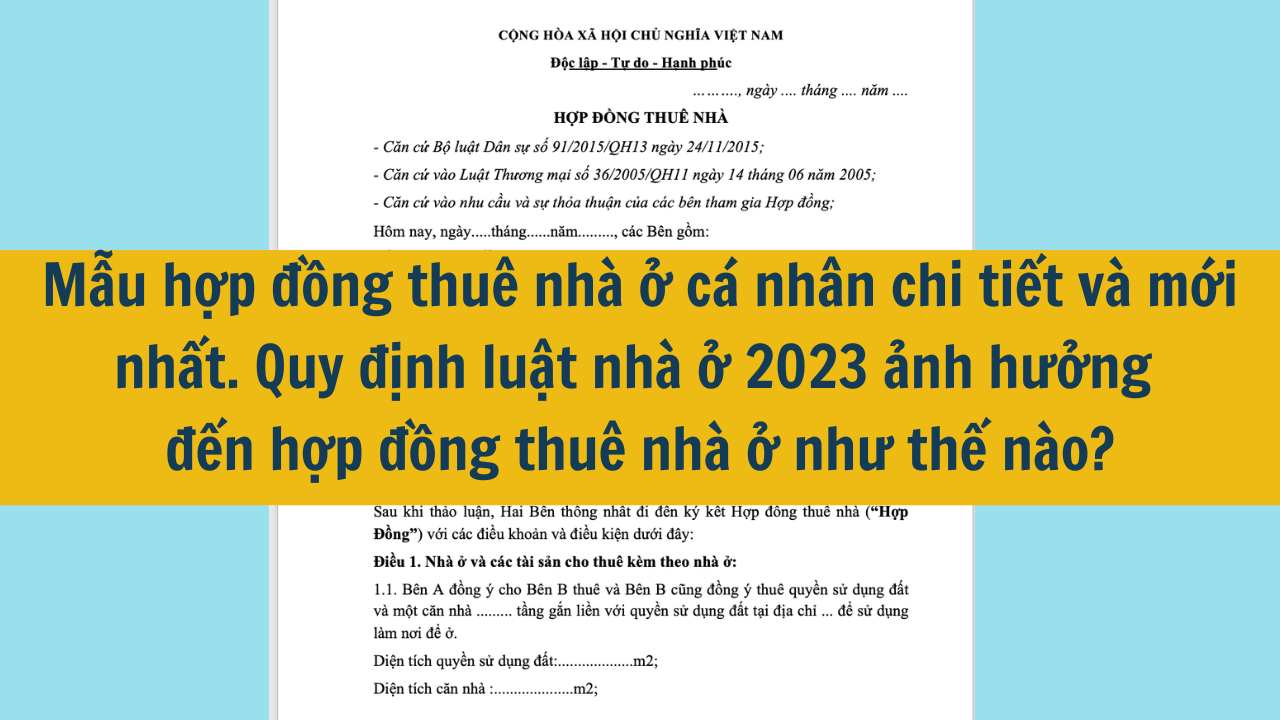
Mẫu hợp đồng thuê nhà ở cá nhân chi tiết và mới nhất năm 2025. Quy định luật nhà ở 2023 ảnh hưởng đến hợp đồng thuê nhà ở như thế nào?
Hợp đồng thuê nhà ở là một thỏa thuận pháp lý bằng văn bản giữa bên cho thuê (chủ nhà) và bên thuê (người thuê nhà) về việc sử dụng một tài sản nhà ở trong một khoảng thời gian nhất định với một khoản tiền thuê nhất định. Cùng xem bài viết Mẫu hợp đồng thuê nhà ở cá nhân mới nhất năm 2025 dưới đây. 09/11/2024Cách tính thuế giá trị gia tăng năm 2024?
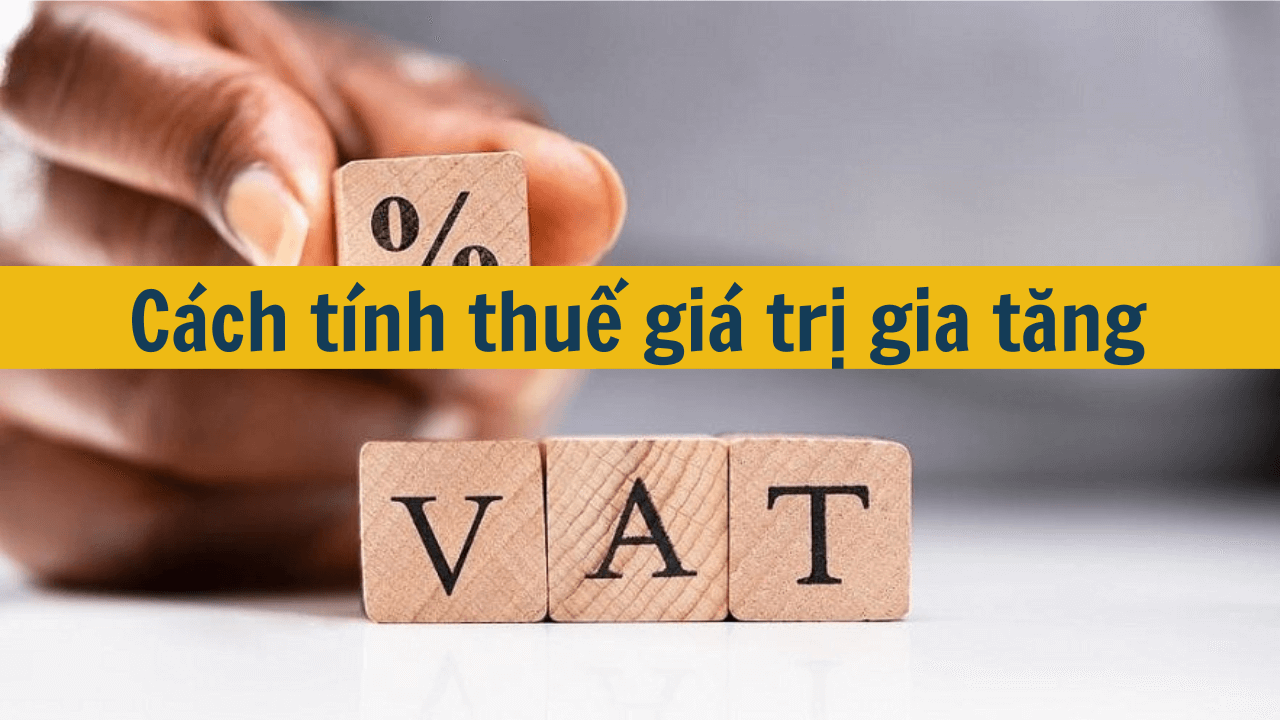
Cách tính thuế giá trị gia tăng năm 2024?
Thuế giá trị gia tăng là loại thuế gián thu đánh vào giá trị tăng thêm của hàng hóa và dịch vụ tại mỗi giai đoạn sản xuất và tiêu dùng. Khi doanh nghiệp bán hàng hóa hoặc dịch vụ, họ sẽ thu thuế giá trị gia tăng từ khách hàng và sau đó nộp lại cho Nhà nước. Để biết được số tiền thuế giá trị gia tăng là bao nhiêu thì cần có cách tính thuế giá trị gia tăng theo quy định. Bạn hãy cùng tìm hiểu Cách tính thuế giá trị gia tăng thông qua bài viết dưới đây nhé. 19/11/2024Quy định mức thuế suất thuế GTGT năm 2024 như thế nào?

Quy định mức thuế suất thuế GTGT năm 2024 như thế nào?
Năm 2024, chính sách thuế giá trị gia tăng (GTGT) tiếp tục có những điều chỉnh mới nhằm thích ứng với tình hình kinh tế - xã hội và các cam kết quốc tế. Bài viết này sẽ đi sâu phân tích các quy định về mức thuế suất GTGT trong năm 2024, giúp doanh nghiệp và người dân nắm rõ hơn về những thay đổi này. 18/11/2024Quy định về thuế đối với hoạt động cho thuê nhà của cá nhân không cư trú mới nhất 2024

Quy định về thuế đối với hoạt động cho thuê nhà của cá nhân không cư trú mới nhất 2024
Trong năm 2024, các quy định về thuế đối với hoạt động cho thuê nhà của cá nhân không cư trú tại Việt Nam đã có những thay đổi đáng chú ý. Bài viết này sẽ trình bày chi tiết về những quy định mới nhất, giúp các nhà đầu tư và chủ sở hữu bất động sản hiểu rõ hơn về nghĩa vụ thuế của mình. Chúng tôi sẽ phân tích các loại thuế áp dụng, cách tính toán thuế suất, cũng như những lưu ý quan trọng mà cá nhân không cư trú cần nắm rõ để đảm bảo tuân thủ pháp luật. 18/11/2024Bán nhà đất có phải chịu thuế giá trị gia tăng không?

Bán nhà đất có phải chịu thuế giá trị gia tăng không?
Nhà đất là một loại tài sản và được giao dịch trên thị trường rất phổ biến. Vậy câu hỏi được đặt ra là mua bán, chuyển nhượng nhà đất có phải chịu thuế giá trị gia tăng không? Câu trả lời sẽ được chúng tôi giải đáp thông qua bài viết dưới đây. 17/11/2024Hướng dẫn cách tính thuế GTGT theo quy định mới nhất
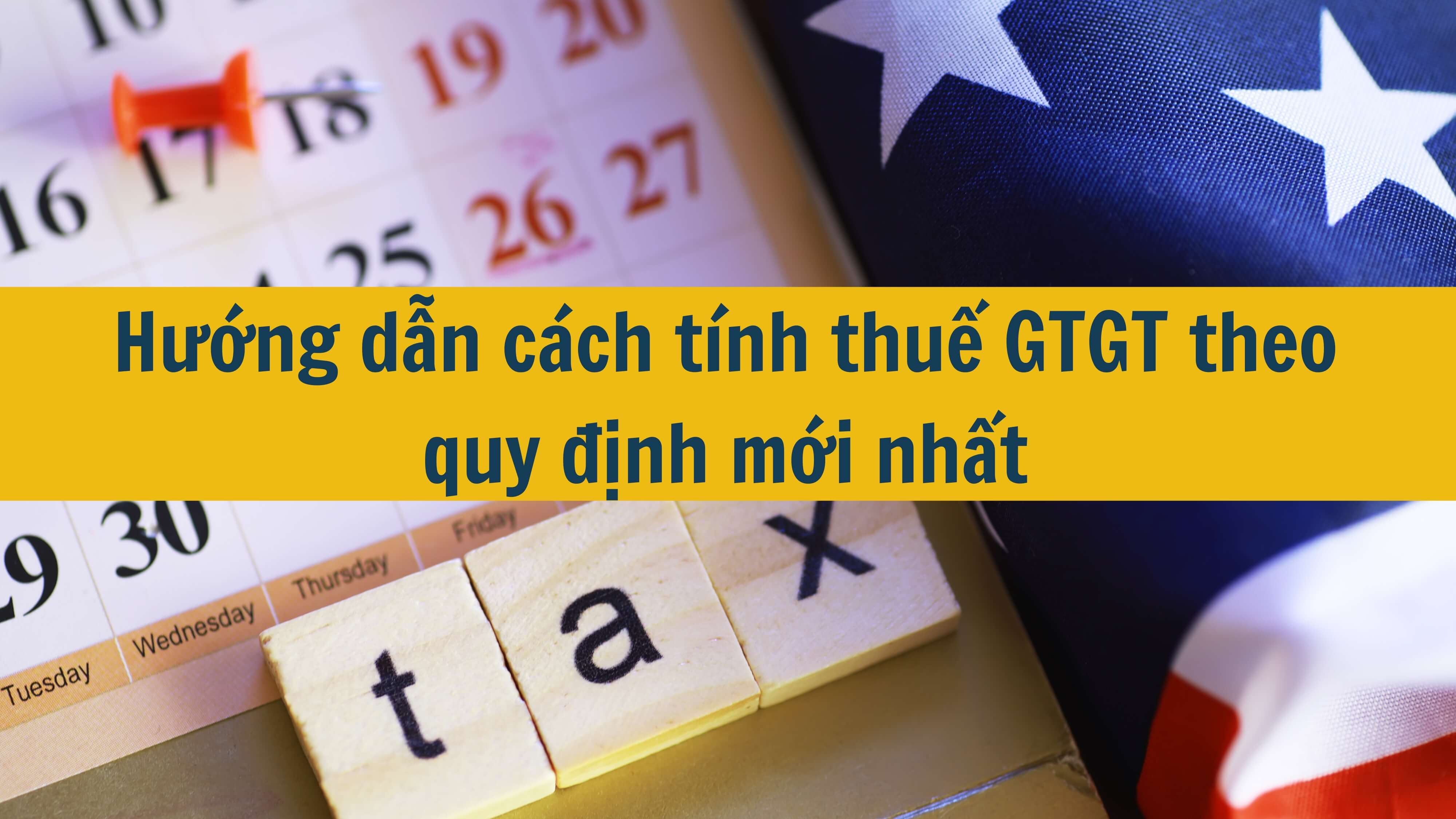
Hướng dẫn cách tính thuế GTGT theo quy định mới nhất
Luật thuế giá trị gia tăng (GTGT) liên tục được điều chỉnh để phù hợp với tình hình kinh tế - xã hội. Những thay đổi mới nhất trong chính sách thuế GTGT đã đặt ra nhiều thách thức cho các doanh nghiệp. Bài viết này sẽ hướng dẫn bạn cách tính thuế GTGT theo quy định mới nhất, giúp bạn nắm vững các quy định và thực hiện đúng nghĩa vụ thuế của mình. 17/11/2024Khuôn nhựa PVC có được giảm thuế giá trị gia tăng không?
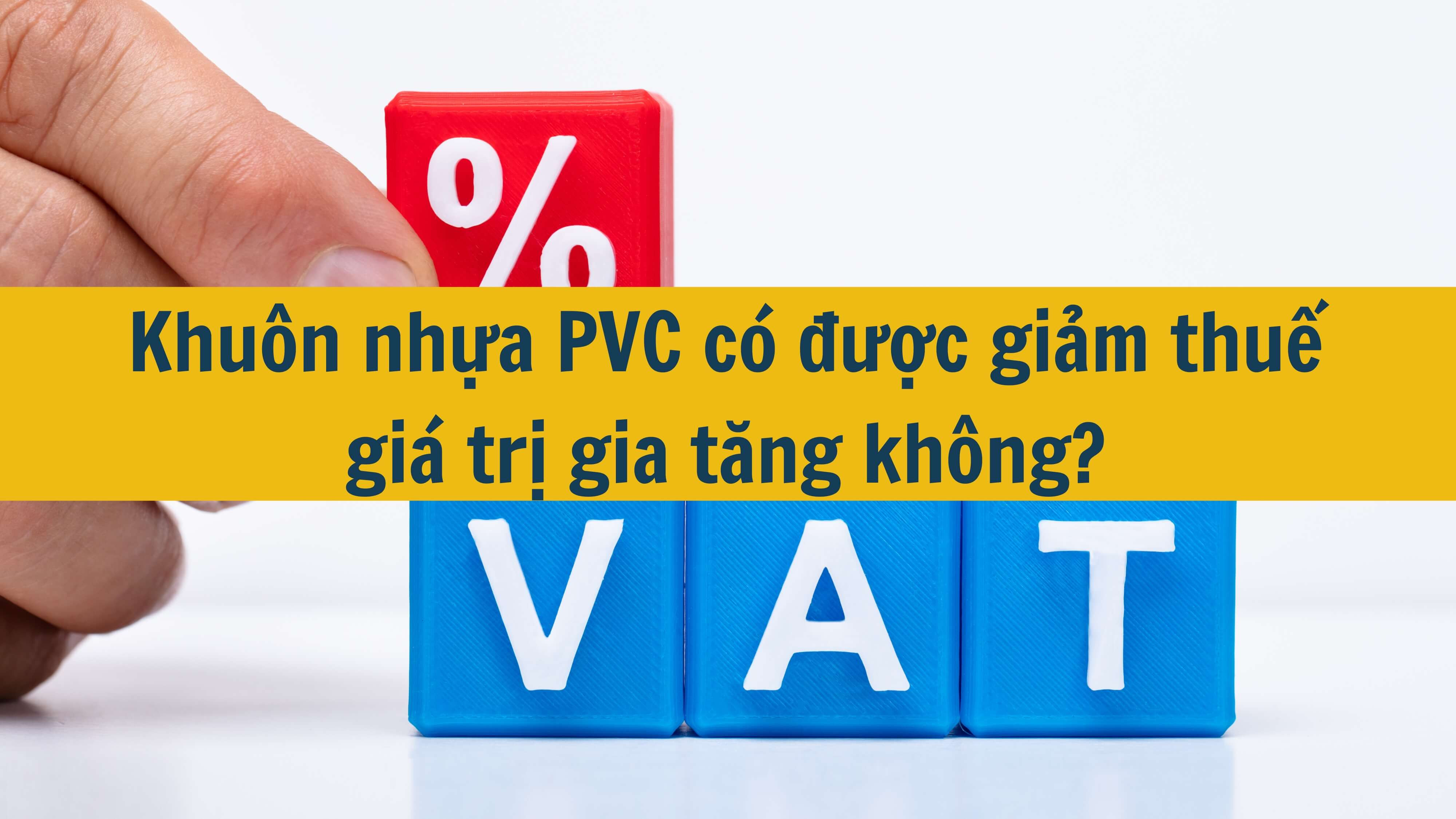
Khuôn nhựa PVC có được giảm thuế giá trị gia tăng không?
Việc áp dụng thuế giá trị gia tăng (GTGT) đối với khuôn nhựa PVC luôn là một vấn đề được nhiều doanh nghiệp sản xuất và kinh doanh quan tâm. Liệu khuôn nhựa PVC có được hưởng ưu đãi giảm thuế GTGT như một số mặt hàng khác hay không? Bài viết này sẽ giúp bạn giải đáp thắc mắc này, cung cấp những thông tin cần thiết về chính sách thuế đối với loại sản phẩm này. 16/11/2024Cách tính thuế giá trị gia tăng ngược chi tiết nhất

Cách tính thuế giá trị gia tăng ngược chi tiết nhất
Thuế giá trị gia tăng là thuế tính trên giá trị tăng thêm của hàng hóa, dịch vụ phát sinh trong quá trình từ sản xuất, lưu thông đến tiêu dùng. Vậy cách tính thuế giá trị gia tăng ngược như thế nào? Bạn hãy cùng chúng tôi tìm hiểu qua bài viết dưới đây nhé. 15/11/2024Thuế GTGT khi sử dụng dịch vụ từ nước ngoài quy định như thế nào?
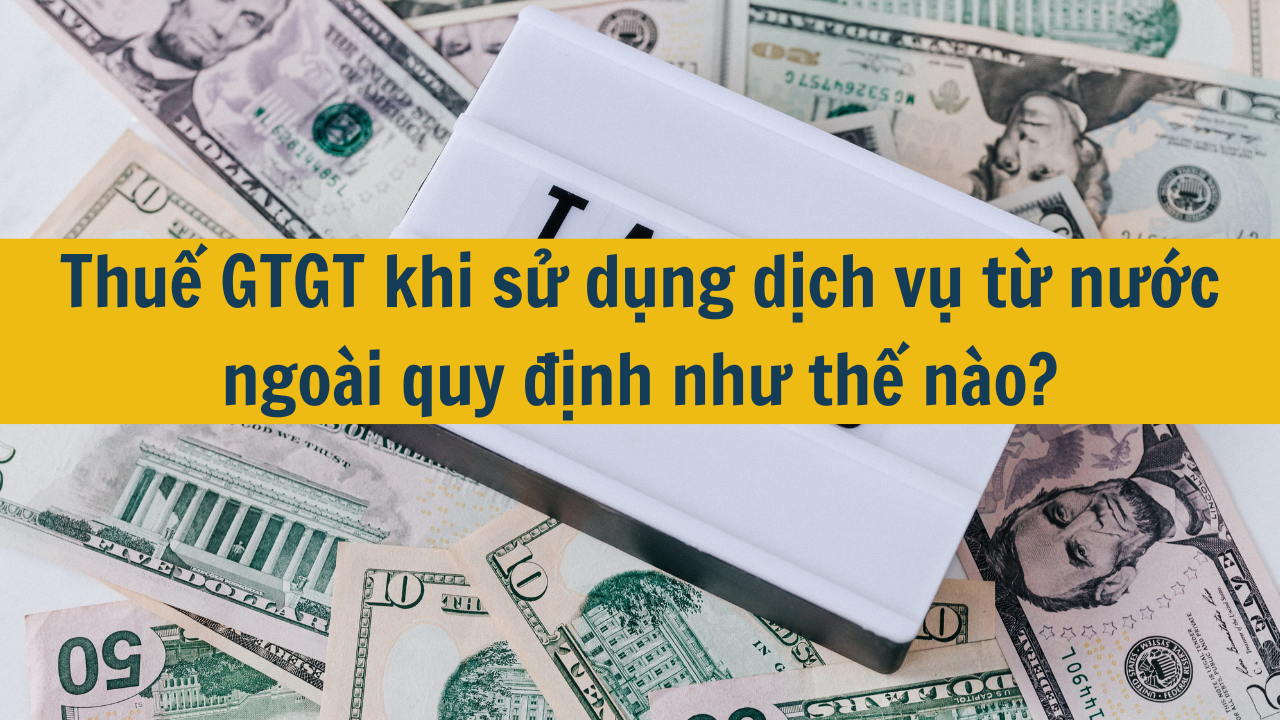
Thuế GTGT khi sử dụng dịch vụ từ nước ngoài quy định như thế nào?
Với sự phát triển mạnh mẽ của công nghệ thông tin và Internet, việc sử dụng các dịch vụ từ nước ngoài trở nên phổ biến hơn bao giờ hết. Từ các nền tảng giải trí, học tập trực tuyến đến các dịch vụ phần mềm, chúng ta dễ dàng tiếp cận và sử dụng chúng. Tuy nhiên, việc sử dụng các dịch vụ này đặt ra nhiều câu hỏi liên quan đến pháp luật, đặc biệt là về nghĩa vụ thuế. Vậy, thuế giá trị gia tăng (GTGT) khi sử dụng dịch vụ từ nước ngoài được quy định như thế nào? Bài viết này sẽ giúp bạn làm rõ vấn đề này. 15/11/2024Thuế gia trị giá tăng nộp thừa thì xử lý như thế nào?


 Luật Thuế giá trị gia tăng 2008 (Bản Pdf)
Luật Thuế giá trị gia tăng 2008 (Bản Pdf)
 Luật Thuế giá trị gia tăng 2008 (Bản Word)
Luật Thuế giá trị gia tăng 2008 (Bản Word)